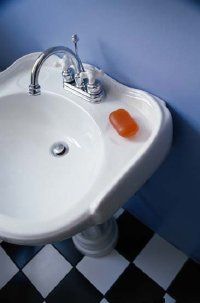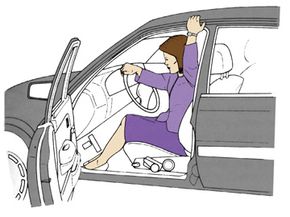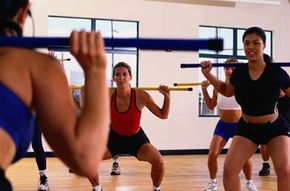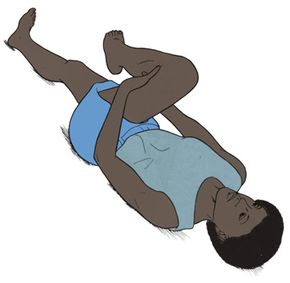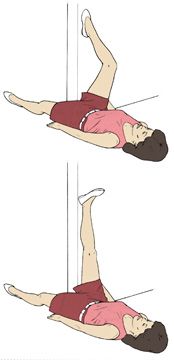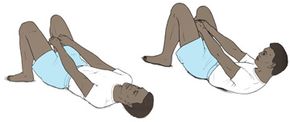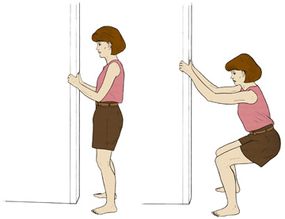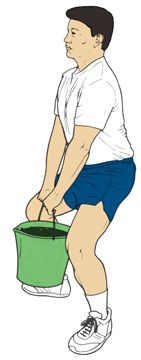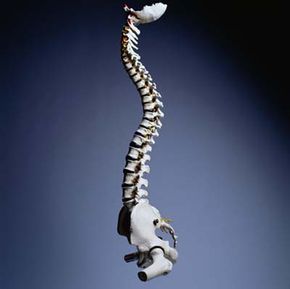Back pain and back injuries are very common in our society. In fact, approximately 60 to 90 percent of all U.S. citizens will experience at least one back injury in their lives. Half of these people will experience multiple episodes of back problems. Many will undergo surgical procedures, and roughly 10 percent will see their condition become chronic. The ultimate cost to society in lost productivity and health-care resources totals in the billions of dollars. An even higher price, however, is paid by the people who have lost the ability to participate in the activities they most enjoy. Back problems can make fishing, golfing, or even just playing with children and grandchildren fraught with pain. In the worst cases, a back problem can interfere with even the ability to get dressed.
Despite all this, people still take their backs for granted, not realizing the dangerous positions they put their backs in every day. Almost everything you do requires the use of your back, and back problems are rarely the result of a single activity or accident. Most injuries occur over a period of years or even decades, as a result of various factors -- how you sleep or sit, what you eat, or how you deal with the emotional stresses at home and work. In this article, we will tell you how to perfrom those tasks, and many more, without injuring your back. Just look at all the helpful tips spread out over these sections:
Advertisement
- Protecting Your Back in Bed You'd think it would be difficult to injure your back while sleeping. While unconscious your muscles are relaxed and you're not lifting or carrying anything. But the truth is, if you have a bed that does not offer your back enough support, it could be the reason why you wake up with back-stiffness. Also, if you are in a position that is bad for your back and you stay in it for eight hours while you sleep, you could be damaging your back without knowing it. In this section, we will tell you how to buy the right bed and what position you should sleep in.
- Protecting Your Back in the Morning While you're getting ready in the morning to start your day there are a host of bad habits that could put stress on your back. For instance, when you stand at the sink, brushing your teeth, do you support your back? In this section, we will give you many tips for getting read to face the day without neglecting your back. We will show you the proper way to put on your shoes and tell you the right type of shoes to avoid back injuries. There's nothing like starting out your day on the right foot.
- Protecting Your Back in the Car Many of us spend a significant portion of our days in the car. Strangely, little though is given to how comfortable we are in our cars, or what damage our car seats could be doing to our backs. In this section, we will tell you the survival tips you need to get through your morning commute without sacrificing your back. We will tell you the correct way to get in and out of car and how to make your car seat more back-friendly. We will also give you back-saving tips for a long car ride.
- Protecting Your Back at Work Your office is like your home-away-from-home. Yet, almost not consideration is given to how comfortable you are while sitting at your desk. The wrong type of chair, a keyboard or monitor that is positioned at the wrong angle, or just sitting in one position for too long can all add up to significant back problems. We will show you how to set up your cubicle in way that will minimize back strain.
- Protecting Your Back While Exercising It's a vicious cycle. If your back hurts, you will probably stop exercising. But if you stop exercising, you are more likely to injure your back. Even if your back is bothering you, it is important to get at least a little exercise. Movement keeps the joints in your back lubricated and loose. In this section, we will show you how to hit the gym without putting yourself in traction. We will also give you some exercise alternative that could be better for your back.
- Stretches for Your Back Keeping your back flexible is a big part of keeping your back injury-free. When your back tightens up, you are more likely to pull or strain a muscle. In this section, we will show several stretches to keep your back loose. First we will demonstrate how you should stretch your hips. Next, we will move on to the hamstrings and then the hip flexors. Finally, we will conclude with stretches for your low back and spine.
- Exercises for Your Back Though we told you earlier how to exercise without injuring your back, what we did not do is show you exercises to specifically strengthen your back. The muscles in your back not only support the spine, but they hold up your entire upper-body. Your back muscles need both strength and conditioning to perform their functions properly. In this section, you will learn exercises like the curl-up for your abdominal muscles, exercises for your upper and lower back, and the proper way to squat without injuring your back.
- Protecting Your Back While Lifting Most people who throw out their back do so by attempting to lift an object incorrectly. Lifting puts more stress on your back than any other activity -- with the possible exception of carrying. In this section, we will show a variety of lifts designed to save your back. You will learn the squat lift for heavy objects, the golfer's lift for light objects, and the crane lift for awkward objects. If you can master lifting correctly, you have made a major stride in protecting your back.
- Protecting Your Back When Moving Objects Transporting or carrying an object may not provide the immediate, traumatic stress that comes when trying to lift an object, but it can do just as much damage to your back. There are several techniques you can employ to help you move objects that won't result in a trip to the emergency room. In this section, we will offer helpful advice for carrying or moving objects. We will also tell you the correct way to use a tool like a shovel or rake, and the best way to store objects for your back.
- Diet and Back Pain Watching what you can eat can also help protect your back. Most obviously, if you do not carry a lot of weight on your front, it will take a lot of strain off of your back muscles. But in addition to the benefits of maintaining a healthy weight, the right foods can also prevent back injuries. If you are tired and fatigued from lack of nutrition, you are much more likely to pull a muscle or acquire another back injury. We will tell you the foods you should be eating to save your back.
- Stress and Back Pain Stress and tight muscles go together hand-in-hand. If you are carrying a lot tension in your upper back and shoulders, you are ripe for a back injury. In this section, we will help you recognize when you are experiencing high stress levels and need to be careful of your back. We will also offer some tips for dealing with your stress such as visualization.
This information is solely for informational purposes. IT IS NOT INTENDED TO PROVIDE MEDICAL ADVICE. Neither the Editors of Consumer Guide (R), Publications International, Ltd., the author nor publisher take responsibility for any possible consequences from any treatment, procedure, exercise, dietary modification, action or application of medication which results from reading or following the information contained in this information. The publication of this information does not constitute the practice of medicine, and this information does not replace the advice of your physician or other health care provider. Before undertaking any course of treatment, the reader must seek the advice of their physician or other health care provider.
Advertisement

